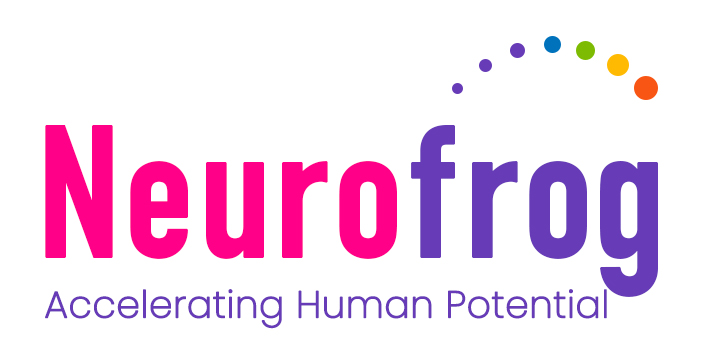The Future of Work Today
The AI Automation
Job Engine
This is part two of Getting our Children Ready for the Future of Work series.
I'd like to start by drawing a comparison between the Industrial Revolution and the Automation Revolution. In the Industrial Revolution, like the current Automation Revolution, a certain kind of job disappeared, but many jobs, and many new types of jobs were created. The comparison: Revolutions are massive job engines providing massive opportunities.

The AI Automation Job Engine
Forecasting
the Impact
of Automation
By 2030, AI will lead to an estimated $15.7 trillion, or 26% increase, in global GDP.
Increased productivity will contribute to approximately 40% of this increase while consumption will drive 60% of GDP growth.
63% of CEOs believe AI will have a larger impact than the internet.
CEO’s consider AI will create even greater growth in global economies with an overall sentiment that AI will be a catalyst for transformation and opportunity across regions.
WEF predicts automation will create an increase of 58 million jobs.
The Brain
Economy
From Factory
to Automation
This seismic shift has significant implications on many aspects of life including our education systems – designed to educate us for factory life within the Industrial Revolution. We are now well into the Automation Revolution, defined by AI, Robots, Cobots, autonomous and automated systems. All augmenting production and changing the workplace forever. This rapid change is causing a massive shift in labour requirements – from workplace organisation to mindsets and skills.
Skills, not Jobs
are The Future of Work
To paraphrase Coursera, in The Future of Work, defined by automation and digital technologies, skills, rather than jobs, become the new career currency.
Are University
Trained Professionals
Out of a Job?
Like most parents, I am concerned about what the workforce will look like once my daughter hits the labour market, in her case about 7 years.
An overwhelming economic trend of the last 10 years has been looking at how AI and automation can run cognitive tasks often performed by university trained professionals.
In this transition period, automation and artificial intelligence is certainly putting some expensive university-trained professionals out of a job.
We’re Looped in
a Transition Path
Economists call this period of continual successive change as we move from an economy powered by manual capital to one powered by cognitive capital, a transition path, accelerated by Covid.
For the short term, we’re looped in a transition path, an ongoing cycle of massive rapid changes, causing massive disruption and massive opportunity. The labour market is a powerful example of this.
A World Economic Forum report claims by 2025 AI will replace some 85 million jobs, however 97 million new jobs will be created because of AI
What’s the
impact for Parents?
Most parents want to understand the impact of automation, AI, and the digitalisation of everything on the future skills, jobs, and careers of their children.

Machine Learning Algorithms are replacing tasks rather than skills.
Some perceive automation and AI as a bleak race to the bottom for cognitive efficiency. I tend to view our current pattern as a period of transition or realignment where of the role of cognitive value in the market is being redefined. This redefinition of value provides significant opportunities for families, communities, and countries.
Asia Pacific
Leaps Ahead
Countries with the desire and capacity for change are leveraging their human capital to leap ahead and stay ahead in The Brain Economy.
We will see gaps between countries widen depending upon their Brain Economy strategies, tactics, and approaches to execution.
Singapore
Leads the Leap
Singapore for example ranks first in the Human Capital Index. They have developed clear strategies and tactics they’ve been delivering based on the importance of skills development within their current and future human capital strategy. Singapore views human capital development essential for their economy to remain competitive, for businesses to attract and retain talent, and Singaporeans to continue to have better jobs, better salaries, and better careers.

Malacca Bridge Singapore
Advancing
Human Potential
Singapore has been on a decades long social and economic development plan, and since 2010 has included Research, Innovation, and Enterprise with the advancement of Human Health and Potential being a core pillar.
Advancing human potential is critical for Singapore with human capital being their principal and most valuable resource.
Countries with poorly developed human capital strategies and tactics should take pause as economies too focused on natural resources are playing a shallow and short game in the Automation Revolution.
- Prenatal and early childhood development
- Learning capacity in childhood and adulthood
- Healthy and meaningful longevity
Singapore’s strategy is designed to continually create and build sustainable human capital value which will see them surf the wave of the Automation Revolution by being leaders in the Brain Economy and delivering on their ambitions to advance human potential.
Where
do we start?
The science is unequivocal. The place to start and help our children prepare for the future of work and automation is in their First 1,000 Days of Life, when our cognitive, social & emotional, and physical scaffolding is being designed and built.
During early childhood, from pregnancy to the age of five, our brains develop at an amazing rate – faster than at any other time in our lives.
So, at Neurofrog we’re on a mission to help as many kids as possible, develop the skills and resilience that will enable them to thrive and reach their full potential working within the Automation Revolution.
Share this thought

